What is the Purpose of a Tapered Roller Bearing?
Tapered roller bearings are essential components in many mechanical systems, designed to handle both radial and axial loads simultaneously. These specialized bearings consist of tapered inner and outer raceways with tapered rollers arranged between them. The unique geometry of tapered roller bearings allows them to distribute loads evenly across a larger surface area, making them ideal for applications that require high load capacity and durability.

What are the advantages of using single row tapered roller bearings?
Single row tapered roller bearings offer several significant advantages that make them a popular choice in various industries and applications. Their unique design allows them to handle combined loads - both radial and axial forces - more effectively than many other bearing types. This capability stems from the tapered geometry of the rollers and raceways, which creates a larger contact area between the rolling elements and the races.
One of the primary benefits of single row tapered roller bearings is their high load-carrying capacity. The tapered design allows for a more even distribution of stress across the bearing's components, enabling it to withstand heavier loads compared to similarly sized cylindrical or ball bearings. This increased load capacity makes them ideal for use in heavy machinery, automotive applications, and industrial equipment where high forces are common.
Another advantage is their ability to maintain proper alignment under heavy loads. The tapered design naturally creates a thrust force that helps keep the bearing components in proper alignment, even when subjected to significant axial loads. This self-aligning property helps reduce wear and extend the bearing's service life, particularly in applications where misalignment could otherwise lead to premature failure.
Single row tapered roller bearings also excel in terms of stiffness and rigidity. Their design allows for preloading, which can eliminate internal clearances and increase the overall stiffness of the bearing assembly. This characteristic is particularly valuable in precision machinery and equipment where minimal deflection and high accuracy are required.
How do single row tapered roller bearings contribute to improved equipment performance?
Single row tapered roller bearings play a crucial role in enhancing the performance of various types of equipment across multiple industries. Their unique design and capabilities contribute significantly to the overall efficiency, reliability, and longevity of the machines in which they are installed.
One of the primary ways these bearings improve equipment performance is through their superior load-handling capabilities. By effectively managing both radial and axial loads, single row tapered roller bearings allow machinery to operate under higher stress conditions without compromising performance. This increased load capacity translates to improved equipment output and productivity, as machines can handle heavier loads or operate at higher speeds without risking premature failure or excessive wear.
The enhanced stiffness provided by tapered roller bearings also contributes to improved equipment performance. In precision machinery, such as machine tools or measuring equipment, the rigidity of the bearing system is crucial for maintaining accuracy and repeatability. Single row tapered roller bearings, when properly preloaded, can significantly reduce deflection under load, ensuring that critical components remain in precise alignment. This improved stiffness leads to better machining accuracy, reduced vibration, and overall higher quality output in manufacturing processes.
Another aspect of improved performance comes from the bearing's ability to maintain proper alignment under varying load conditions. This self-aligning property helps to reduce friction and wear within the bearing itself, as well as in other components of the machine. Lower friction translates to reduced energy consumption, as less power is lost to heat generation and unnecessary resistance. This not only improves the overall efficiency of the equipment but can also lead to significant energy savings over time, particularly in large industrial applications.
The durability and longevity of single row tapered roller bearings also contribute to improved equipment performance by reducing downtime and maintenance requirements. These bearings are designed to withstand harsh operating conditions, including heavy loads, contamination, and temperature fluctuations. Their robust construction and even load distribution help to extend the service life of both the bearings and the equipment they support. This increased reliability means less frequent maintenance intervals, fewer unexpected breakdowns, and ultimately, higher overall equipment effectiveness (OEE).
In automotive applications, single row tapered roller bearings play a critical role in enhancing vehicle performance and safety. They are commonly used in wheel hubs, transmissions, and differentials, where their ability to handle combined loads is essential. In wheel hubs, for example, these bearings provide the necessary support to handle the vehicle's weight, cornering forces, and braking loads while allowing smooth wheel rotation. This results in improved handling, reduced tire wear, and better overall vehicle performance.
The adjustability of single row tapered roller bearings also contributes to improved equipment performance by allowing for fine-tuning of bearing clearance or preload. This adjustability is particularly valuable in applications where thermal expansion or wear can affect bearing performance over time. By being able to adjust the bearing settings, engineers can optimize performance, reduce noise and vibration, and extend the useful life of the equipment.
Moreover, the heat dissipation characteristics of tapered roller bearings contribute to better equipment performance, especially in high-speed applications. The rolling motion of the tapered rollers helps to distribute and dissipate heat more effectively than some other bearing types. This improved thermal management allows for higher operating speeds and helps prevent overheating, which can lead to premature lubricant breakdown and bearing failure.
What factors should be considered when selecting a single row tapered roller bearing for a specific application?

Selecting the appropriate single row tapered roller bearing for a specific application is a critical decision that can significantly impact the performance, reliability, and longevity of the equipment. Several key factors must be carefully considered to ensure the chosen bearing meets the requirements of the application and operates efficiently under the given conditions.
Load characteristics are perhaps the most fundamental consideration when selecting a tapered roller bearing. Engineers must accurately determine both the magnitude and direction of the loads that the bearing will experience during operation. This includes not only the steady-state loads but also any dynamic or shock loads that may occur. Single row tapered roller bearings are particularly well-suited for handling combined radial and axial loads, but the specific load ratios can influence the optimal bearing selection. It's essential to choose a bearing with a load rating that exceeds the maximum expected loads by an appropriate safety factor to ensure long-term reliability.
Operating speed is another crucial factor in bearing selection. While single row tapered roller bearings can handle relatively high speeds, they do have speed limitations compared to some other bearing types. The speed capability of the bearing is influenced by its size, design, and lubrication method. It's important to consider not only the nominal operating speed but also any potential overspeed conditions that may occur. Higher speeds generate more heat and require special attention to lubrication and cooling to maintain proper bearing function.
The operating environment plays a significant role in bearing selection and can greatly affect performance and service life. Factors such as temperature, contamination levels, and exposure to moisture or chemicals must be carefully evaluated. Extreme temperatures, both high and low, can impact the bearing material properties and lubricant performance. In environments with high levels of contamination, special sealing arrangements or more robust bearing designs may be necessary to prevent premature wear and failure.
Space constraints and mounting arrangements are practical considerations that can significantly influence bearing selection. The available space within the equipment may limit the size and type of bearing that can be used. Additionally, the mounting arrangement - whether it's a fixed or floating bearing arrangement - will affect the choice of bearing and how it's installed. Some applications may require bearings with specific mounting features or dimensions to fit existing housings or shafts.
Precision requirements vary widely depending on the application. For high-precision equipment, such as machine tools or measuring instruments, bearings with tighter tolerances and higher accuracy grades may be necessary. The required level of running accuracy, including considerations of radial and axial runout, should be factored into the selection process.
Lubrication is a critical aspect of bearing performance and longevity. The selection of the appropriate lubrication method and lubricant type depends on factors such as operating speed, load, temperature, and environmental conditions. Some applications may require special lubrication arrangements, such as oil bath lubrication or circulating oil systems, while others may be suitable for grease lubrication. The ease of maintenance and re-lubrication should also be considered, especially for bearings in hard-to-reach locations.
Noise and vibration requirements can be particularly important in certain applications, such as automotive or precision machinery. The bearing's design, manufacturing quality, and installation precision all contribute to its noise and vibration characteristics. In applications where low noise is critical, special attention may need to be paid to bearing selection and installation techniques.
Life expectancy and reliability requirements must be carefully considered, especially in critical applications where bearing failure could lead to significant downtime or safety risks. Calculating the expected bearing life based on the anticipated operating conditions is an essential step in the selection process. In some cases, it may be necessary to select bearings with enhanced materials or surface treatments to meet stringent life requirements.
Cost considerations, while important, should be balanced against performance and reliability requirements. While it may be tempting to choose a less expensive bearing, the long-term costs associated with increased maintenance, reduced efficiency, or premature failure can often outweigh the initial savings. A thorough life-cycle cost analysis can help in making the most economical choice over the long term.
Finally, industry standards and specifications must be taken into account. Many industries have specific requirements or preferred bearing types for certain applications. Adhering to these standards can ensure compatibility, ease of maintenance, and compliance with industry best practices.
In conclusion, the selection of a single row tapered roller bearing requires a comprehensive evaluation of numerous factors. By carefully considering load characteristics, operating conditions, environmental factors, precision requirements, and other application-specific needs, engineers can select the optimal bearing to ensure reliable and efficient equipment operation. This thorough approach to bearing selection contributes significantly to the overall performance, longevity, and cost-effectiveness of the machinery in which these bearings are employed.
Luoyang Huigong Bearing Technology Co., Ltd. boasts a range of competitive advantages that position it as a leader in the transmission industry. Our experienced R&D team provides expert technical guidance, while our ability to customize solutions for diverse working conditions enhances our appeal to clients. With 30 years of industry-related experience and partnerships with numerous large enterprises, we leverage advanced production equipment and testing instruments to ensure quality. Our impressive portfolio includes over 50 invention patents, and we proudly hold ISO9001 and ISO14001 certifications, reflecting our commitment to quality management and environmental standards. Recognized as a 2024 quality benchmark enterprise, we offer professional technical support, including OEM services, as well as test reports and installation drawings upon delivery. Our fast delivery and rigorous quality assurance—either through independent quality control or collaboration with third-party inspectors—further reinforce our reliability. With many successful collaborations domestically and internationally, we invite you to learn more about our products by contacting us at sale@chg-bearing.com or calling our hotline at +86-0379-65793878.
References:
1. SKF Group. (2021). Tapered roller bearings. SKF.com.
2. Timken Company. (2022). Tapered Roller Bearing Catalog. Timken.com.
3. NSK Ltd. (2020). Roller Bearings. NSK.com.
4. Schaeffler Technologies AG & Co. KG. (2021). Tapered Roller Bearings. Schaeffler.com.
5. NTN Corporation. (2019). Technical Review: Trends in Bearing Technology. NTN.co.jp.
6. American Bearing Manufacturers Association. (2022). Bearing Briefs. ABMA.com.
7. Koyo Bearings. (2021). Tapered Roller Bearings. Koyousa.com.
8. FAG Bearings. (2020). Rolling Bearings. FAG.com.
9. Journal of Mechanical Engineering Science. (2018). Recent advances in tapered roller bearing technology. SAGE Journals.
10. Bearing Science. (2022). Selecting the Right Bearing for Your Application. BearingScience.com.
YOU MAY LIKE
-
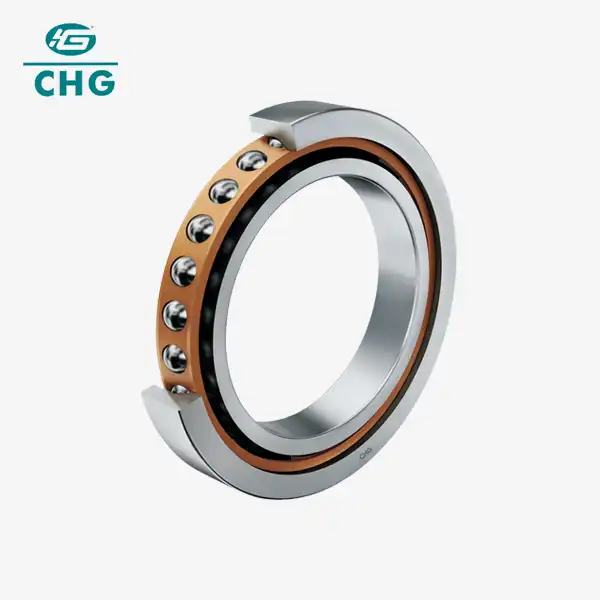 VIEW MOREAngular Contact Ball Bearing
VIEW MOREAngular Contact Ball Bearing -
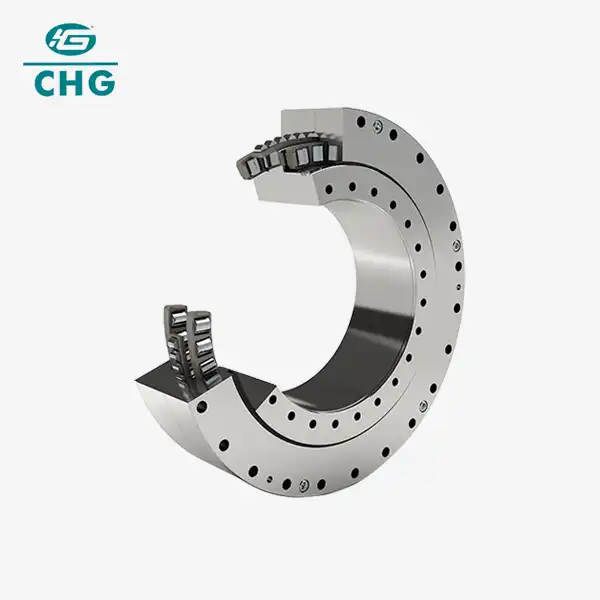 VIEW MOREThree-Row Cylindrical Roller Slewing Bearing
VIEW MOREThree-Row Cylindrical Roller Slewing Bearing -
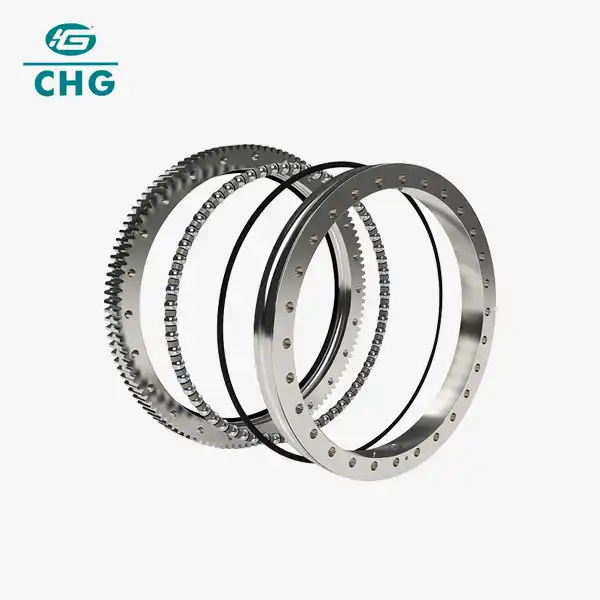 VIEW MOREFour-Point Contact Ball Slewing Bearings
VIEW MOREFour-Point Contact Ball Slewing Bearings -
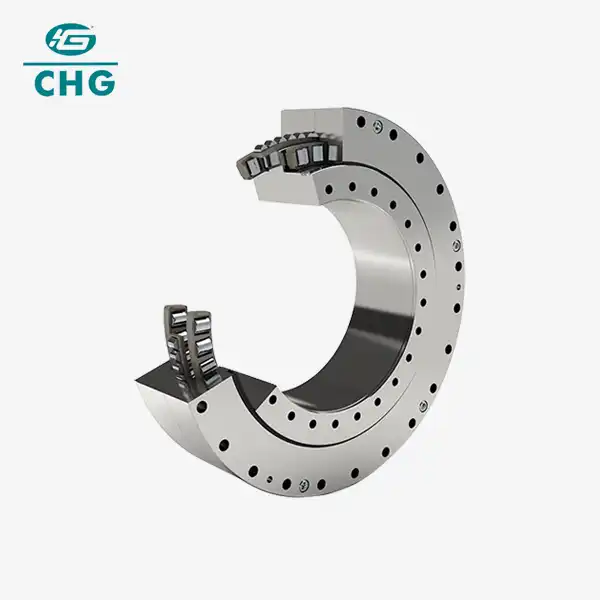 VIEW MOREThree Row Roller Slewing Bearing
VIEW MOREThree Row Roller Slewing Bearing -
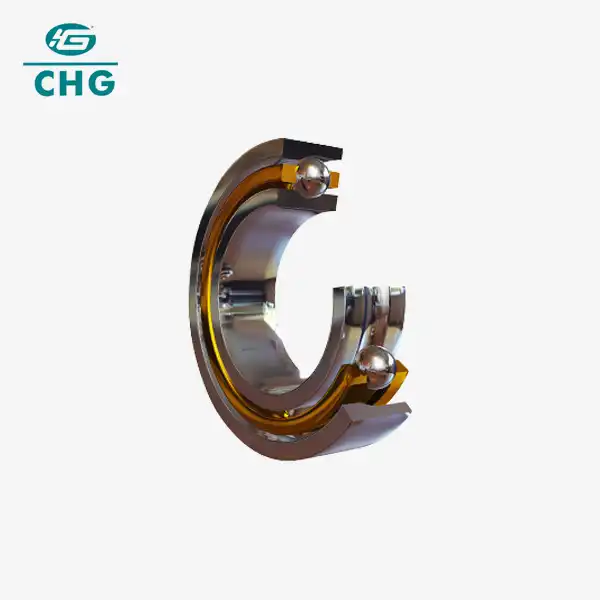 VIEW MOREDeep Groove Ball Bearing - Double Rows
VIEW MOREDeep Groove Ball Bearing - Double Rows -
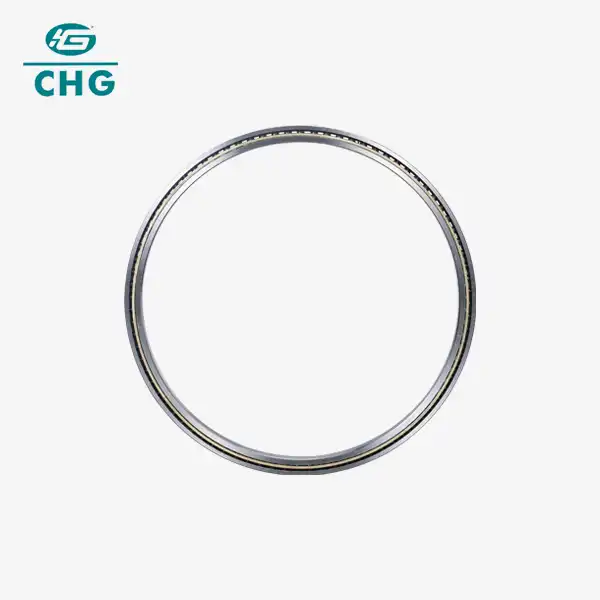 VIEW MOREThin Section Deep Groove Ball Bearings
VIEW MOREThin Section Deep Groove Ball Bearings -
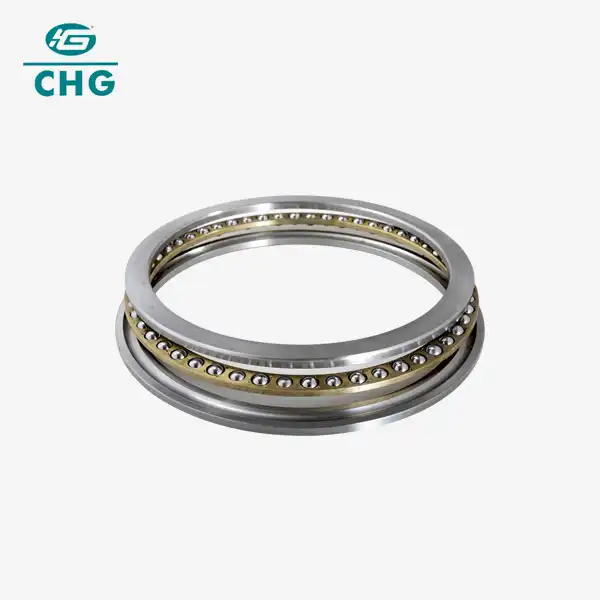 VIEW MORESingle Row Thrust Ball Bearing
VIEW MORESingle Row Thrust Ball Bearing -
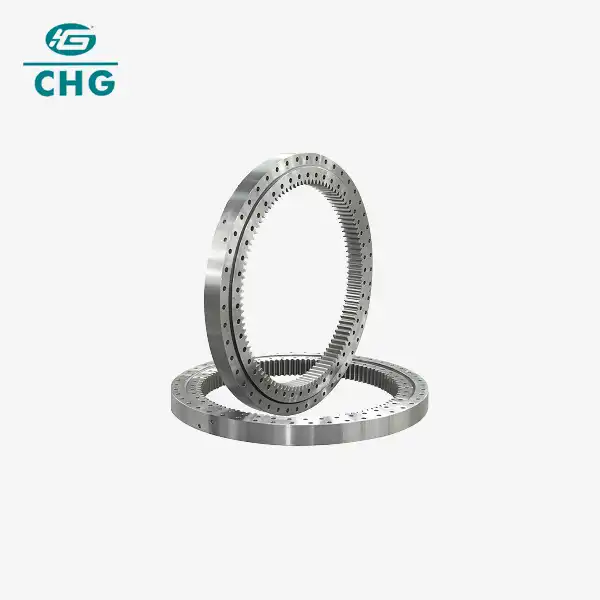 VIEW MORECross Roller Slewing Bearing
VIEW MORECross Roller Slewing Bearing

